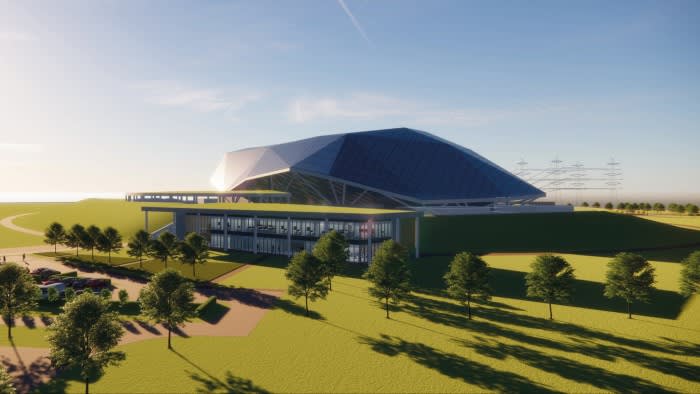Unlock the Editor’s Digest for free
Roula Khalaf, Editor of the FT, selects her favourite stories in this weekly newsletter.
The UK government has picked four companies to proceed to the next stage of negotiations for support to develop small modular nuclear reactors in the UK, marking a step forward for the nascent technology in Britain.
Rolls-Royce, the FTSE 100 British engineer, alongside US-owned rivals Holtec Britain, GE Hitachi and Westinghouse Electric will be invited to enter negotiations for government support worth potentially billions of pounds.
The four have been whittled down from an initial list of six: US company NuScale has not been selected, while France’s EDF withdrew from the competition as it continues to develop its Nuward small modular reactor design.
It is expected two companies will ultimately get contracts once negotiations are finished, although it is possible there could be more.
The selection is a boost for Rolls-Royce, which was last week selected by the Czech Republic as the government’s preferred supplier and is also in the final two in Sweden’s selection process.
The Rolls-Royce-led venture, whose other backers include private investment vehicle BNF Resources, Constellation of the US and the Qatar Investment Authority, has so far invested about £280mn. It has also secured £210mn of government funding to help it through the rigorous nuclear regulatory assessment process.
Chris Cholerton, chief executive of Rolls-Royce SMR, said the company was already “18 months ahead of competitors in the regulatory approvals process” and selection would “help us to maintain this important first-mover advantage”.
Small modular reactors is a catch-all term for relatively small nuclear power plants, parts of which can be built off-site. It typically describes reactors with a capacity of 300 megawatts or less, although Rolls-Royce’s is larger at 470MW.
Proponents argue their size and modular construction means it should be possible to build them with fewer of the cost blowouts and delays that have troubled larger-scale projects in recent years.
Governments around the world are trying to boost nuclear power capacity to meet climbing energy demand while avoiding carbon-dioxide emissions.
There are only three designs so far up and running globally, however, according to a report this year from the intergovernmental Nuclear Energy Agency: in China and Russia, while there is a test reactor in Japan.
The competition for UK government support was launched last year by the then Conservative government, as part of a strategy to replenish the UK’s dwindling nuclear power fleet, most of which is due to shut down by the end of the decade.
It has been running behind the initial schedule to award contracts by the end of this summer, however.
Simon Bowen, chair of Great British Nuclear, the public body set up to advance nuclear projects, said in April he was aiming for the first SMRs to be operational by the mid-2030s.
Welcoming the selection, Sean Sexstone, executive vice-president for advanced nuclear at GE Hitachi, said its BWRX-300 small-modular reactors was a “simplified, safer and scalable design that is tried and tested”.
“We are ready to partner with GBN and the UK government to deliver on our shared nuclear ambitions in the UK, accelerating the energy transition at pace,” he added.


